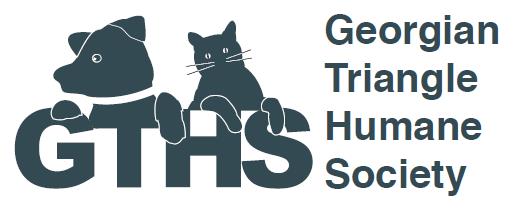 With April being National Prevention of Cruelty to Animals month, GTHS will be running a few blog posts about animal cruelty – what it is, what can be done and measures you can take to report it. It is an important topic that we receive questions about, and the more information we can provide to the community, the more animals we can collectively help.
With April being National Prevention of Cruelty to Animals month, GTHS will be running a few blog posts about animal cruelty – what it is, what can be done and measures you can take to report it. It is an important topic that we receive questions about, and the more information we can provide to the community, the more animals we can collectively help.
DID YOU KNOW?
GTHS is an Affiliate of the Ontario SPCA (OSPCA). This means that we are self-funded and self-governed, but have a relationship with OSPCA. As an Affiliate, our relationship allows us to network, as well as share information, resources, and industry best practices with the OSPCA, their branches, and other Affiliates across Ontario. We are all in this industry for the same reason – to help animals in need.
GTHS does not have animal cruelty investigators, or the capacity to run investigations, therefore we turn to the Ontario SPCA to support this very important function in our region. We are thankful that they are there to provide this support to community members and our four-legged friends in need.
WHAT IS ANIMAL CRUELTY?
Animal cruelty generally falls into two categories: neglect, or intentional cruelty. Neglect is the failure to provide adequate water, food, shelter, or necessary care. Examples of neglect include: starvation; dehydration; inadequate shelter; parasite infestations; failure to seek veterinary care when an animal is in need of medical attention; allowing a collar to grow into an animal’s skin; confinement without adequate light, ventilation, space or in unsanitary conditions; and failure to trim hoofs or nails resulting in excessive growth (e.g. hoofs curling upwards). In some cases neglect is a result of the owner’s ignorance, and can be rectified by law enforcement authorities, like the Ontario SPCA, educating the owner and issuing orders to improve the animal’s living conditions.
If an owner fails to make the required changes, Ontario SPCA investigators can remove the animal to ensure they receive the necessary care. In cases where the owner no longer wants responsibility for the animal, the owner may surrender ownership to the Ontario SPCA or an affiliated Humane Society. In more severe cases, circumstances may require the Ontario SPCA, affiliated humane societies, or other law enforcement authorities to remove the animals immediately to provide urgent medical care.
Equally disturbing as neglect is the brutality of intentional cruelty, involving deliberate physical harm or injury inflicted on an animal. Regretfully, cases of animals being beaten, burned, poisoned or stabbed to death are not uncommon.
In some cases neglect or cruelty is the result of people using animals as tools for commercial profit, such as in the cases of puppy mills, dog fighting, cock fighting and illegal slaughterhouses.
Using deception to mask abuse:
Perpetrators of animal cruelty often portray themselves as kindly animal lovers, making it difficult for people to believe them capable of abuse. From the “friendly” neighbour who mistreats his pets behind closed doors, to the “respected” community member who operates a puppy mill or substandard zoo – there is no one identifying feature that marks a person as capable of committing such unfathomable crimes. Abuse of any animal is upsetting, not only for the pain and suffering inflicted on the animal, but for the fact that animal abuse is often a precursor to human-directed violence and an indicator of family crisis. Untreated, any type of abuse can escalate.
Fortunately, if people witness animal cruelty and neglect and report it to organizations with cruelty investigation authority, legal action can be taken. Federal, provincial and municipal laws cover animals and are used by Ontario SPCA investigators to protect animals in need. In fact, one of the most powerful ways the public can assist Ontario SPCA investigators with their lifesaving work is to understand how to recognize animal cruelty and to report it to authorities.
How to recognize animal cruelty:
Look for these common signs of neglect or intentional cruelty witnessed by Ontario SPCA investigators:
|
For more information on what you can do in the event of suspected animal cruelty, visit the Ontario SPCA’s website, or stay tuned to next weeks blog post on reporting animal cruelty.
Information Provided By: Ontario SPCA


